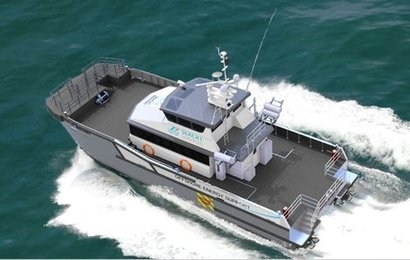
The fourth quarter of 2018, is, atypically, seeing surging demand for offshore wind crew transfer. In the month of October, transfers and charter days exceeded the sum total for 2017, closely following third quarter figures that surpassed company records to date. The figures come at a time when the industry is traditionally looking at a period of downtime as winter approaches, but demand for larger, more capable, workboats continues to rise.
Overall, while the results are a clear positive for individual operators, Seacat Services warns that it is an early indicator of an overheated market, as offshore wind farm developers and operators, and turbine OEMs chase a limited number of high quality offshore energy support vessels.
The shortage in vessels follows a period of low demand for CTVs, while offshore wind projects were in the planning phase, exacerbated by the unattractive commercial terms offered by developers during the lull. This saw some CTV firms exit the market, or deploy vessels elsewhere, as the oil and gas sector begins to recover.
Furthermore, as standards continue to increase throughout the offshore wind market, the workboat industry now consists of an overall net lower number of vessels than before the lull – as a large number now no longer meet the high technical requirements from the industry, and are subsequently repurposed, such as for near shore survey. With the race to build-out offshore wind projects, however, CTVs are again in high demand, causing a shortage in vessel availability.
“While record figures may sound wholly beneficial for Seacat Services and other market providers, it’s also indicative of a wider vessel supply shortage that is already starting to cause a few challenges in build schedules and vessel pricing” said Ian Baylis, Managing Director, Seacat Services. “This doesn’t just mean that shipyards need to build more boats, it means that until the industry can meet the demand, there is limited redundancy. With little room for mistakes, should a vessel fail or require removing from operations for scheduled maintenance, it’s something that should be of concern to project developers. At Seacat we’re currently in collaboration with a number of our industry colleagues to ensure that we meet the demands of the offshore wind sector. This has seen us provide our vessels for charter on other projects, or take other firms’ vessels where required.”
Mr Baylis added that with timelines for project development incredibly important in the industry, with a drive to a lower levelised cost of energy, it’s imperative that offshore developers start to provide the energy support vessel firms with longer term certainty to avoid similar scenarios in future.
“We’ve seen what boom and bust looks like in offshore oil and gas” Baylis said, “there’s a real opportunity to ensure we don’t follow the same path in offshore wind.”
For additional information:

